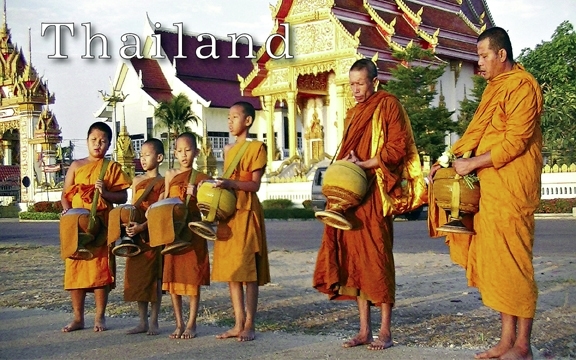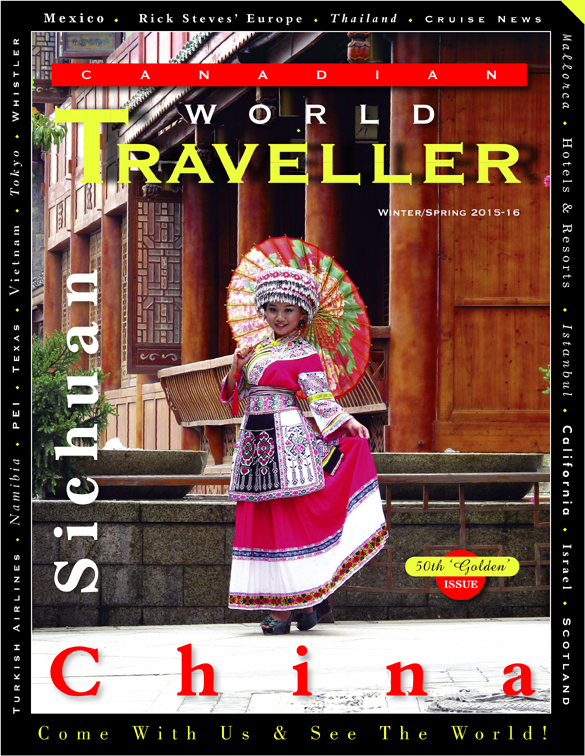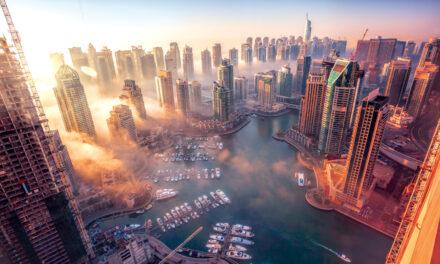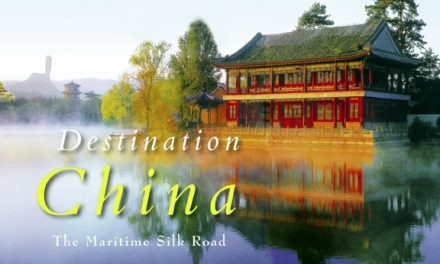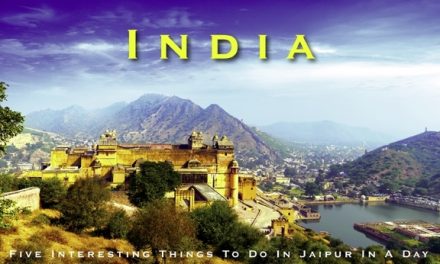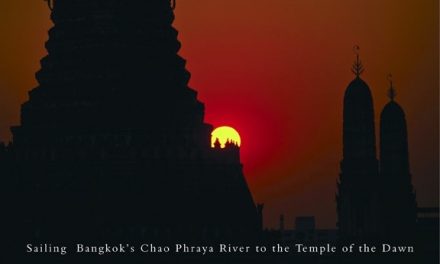Thailand
Exploring Thailand’s Isan Region
Article & Photography by Steve Gillick

Outside of Khong Chiam we sat down to talk with the Abbot of one of the forest temples. With our guide acting as interpreter, he told us that after 16 years as an insurance salesman, he came to the realization that his busy city lifestyle was not only stressful but was both unsatisfying and incompatible with his Buddhist upbringing. So he quit his job, studied and eventually became ordained as a monk. Five years ago he moved to the forest temple where he could use all five of his senses to engage with nature and better appreciate the tenets of Buddhism, and ultimately continue on the road to spiritual fulfillment.
Our visit with the Abbot of Wat Siri Pa Lan Sai was only one of the memorable encounters we had as we explored an area of Thailand that is mostly overlooked by visitors. Isan (also spelled Issan) in Thailand’s northeast, is the country’s largest region. Due to its proximity to Laos, Cambodia and Vietnam, it offers a wonderful melding of cultures that can be seen in the architecture, markets, foods and lifestyles of the people. The name “isan” refers to the Hindu God Shiva who is symbolically associated with the Northeast and represents prosperity and knowledge.
Our trip in a small van took us on a circular route from Bangkok to Korat, on to Khon Kaen, Udon Thani, Sakon Nakhon, Nakhon Phanom and Khong Chiam, before flying back to Bangkok.
The adventure began bright and early the first morning when Kob and Pop, our guide and driver, picked us up at our hotel in Bangkok for the 2 ½ hour drive north to catch the 7:30 am train at the Prapong Station, just outside of Kabinburi. A dozen or so vendors waiting for the train had arrived early to set up a mini-market for the local villagers, with noodles, fruits, vegetables and even cooked rats (a popular dish) for sale. When the train eventually arrived at 8:00 am, everyone boarded with bags, boxes and baskets of produce (plus a few frantic chickens) and 20 minutes later they all rushed off the train to set up their stalls at the Kabinburi market.
For us it was a photographer’s dream come true with friendly, chatting vendors selling clothing, household items, colourful fruits and vegetables, pungent spices, freshly caught fish, prawns and crab, chicken, pork, eggs, soups and all varieties of sweets.
And this was only one of many markets we would visit over the next few days as we explored Isan’s treasures, temples and attractions.
Prasat Phimai is a 12th century Khmer temple, outside of Korat, that is said to have been the model for Cambodia’s Angkor Wat complex. The main Prang (tower) represents the mythical Mount Meru, the abode of the Gods and the link between heaven and earth. However, unlike Angkor Wat, there were hardly any crowds at Phimai, which allowed us to casually explore the temple archways, niches and courtyards and discover kings and mythological characters in the delicate, faded, stone carvings.
Travelling further north toward Khon Kaen and Udon Thani, a number of small villages excel in traditional crafts and warm hospitality. Bang Song Silk Village provides fascinating insight into one of Isan’s most important cottage industries. Entire families are involved in feeding silk worms, boiling the cocoons, extracting the threads, weaving beautiful silk products and then selling the finished products.
In Ban Kok Village, turtles are believed to embody holy spirits that have protected the villagers for over 250 years. Every day at sunset, the turtles emerge from their dark hiding spots in and around the homes of the residents, to feast on offerings of grapes, melons, mangoes and jackfruit. In April we saw about 30 turtles but at other times of the year, hundreds have been reported wandering the streets.
And at Koo Kaew Village, straw mats are woven by teams of mothers and daughters using large wooden looms. The rest of the family assists in cutting and storing the straw and the results are large colourful table and floor coverings and smaller mats for sleeping and eating.
Closer to Udon Thani, mystical beliefs come alive at The Naga Forest Temple, believed to be the entrance to the underground world of a giant serpent. The mythological snake (Naga) is said to have breathed fireballs into the sky to form steps for the Buddha to ascend to heaven. Passing by the seven-headed snake statues, a 100 meter bridge connects the Buddhist Temple to an island, where colourful garlands protect the trees, families gather to pray in the many small shrines, and the devout rub giant gongs in a circular motion to produce a singing sound that is said to appease the Naga and bring good fortune.
In cities such as Nakorn Phanom, vibrant night markets provide a social atmosphere to hang out, listen to live music, snack and shop. Exciting morning markets, such as the one in Udon Thani, fill the streets with tuk tuks (3 wheeled taxi/motorcycles) bringing vendors and locals to engage in the busy atmosphere of fresh and prepared foods, savoury smells, calculated bargaining and colourful displays.
Travelling through Isan you encounter new temples, such as Wat Tham Padan in Sakorn Nakhon, where statues and rock carvings of holy men surround a shining, golden stupa perched on a rock. As well there are more traditional temples, such as Wat Phra That Phanom in Nakhon Phanom, where pilgrims circumambulate the beautiful, tall, white-and-gold stupa, once to reflect on the Buddha, a second time to contemplate the sacred scriptures, and a third time to express devotion to the work of the temple monks.
Isan also has its share of amazing natural attractions. Sam Pun Boak (3000 holes) in Ubon Ratchathani is known as Thailand’s Grand Canyon and provides visual serendipity as you scamper and photograph the rocks and the scenery. At Sao Cha Ling you can get up-close-and-personal with the incredible mushroom rocks, and at Pha Taem National Park, a hiking path with observation platforms puts you face-to-face with rock paintings that depict hunting, fishing and scenes from daily life as it was 3000 to 4000 years ago.
But with all this physical activity and talk of markets and dining, it’s good to know that Isan offers nothing short of culinary bliss for breakfast, lunch and dinner. Over the 8 day trip we indulged in crunchy papaya salad, spicy duck salad, 1000 year old eggs fried with basil, garlic squid, grilled prawns, steamed fish, scrumptious Tom Yum Kung and Tom Ka Guy (soups), fresh mountain vegetables, local fruits such as mango, mangosteen, rambutan, dragon fruit and, snake fruit, Pad Thai, rice noodles, Korat noodles, sticky rice dishes, fried and grilled chicken, sweet tamarind, lotus root…and more!
The last two nights of our journey were spent at the Peerada River View Resort in Khong Chiam where our room was steps from the Mekong River. In the evening we were entranced by spectacular sunsets, with Laos only a stone throw away on the far side of the river, and in the morning we would watch fishermen cast their nets, silhouetted by the golden sun rise. It was a fitting conclusion to a unique adventure, steeped in awe, bound in reflection and experiencing a lifestyle very different from our own.
For those who have explored the Bangkok-Chiang Mai-Phuket circuit in Thailand, Isan’s undiscovered attractions, amazing food, friendly people and engaging culture are the logical next step.
www.tourismthailand.org
Click on cover to view published article

